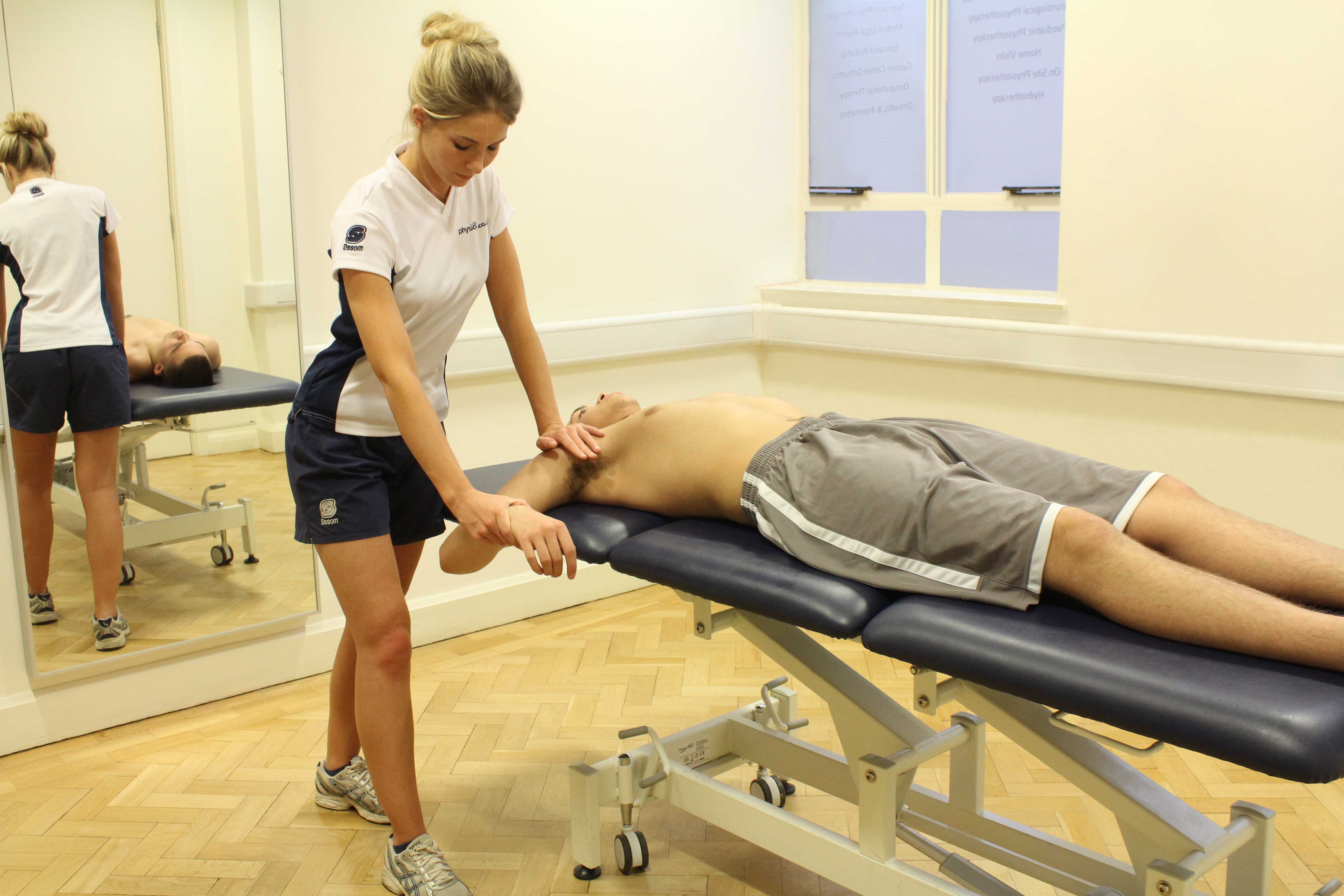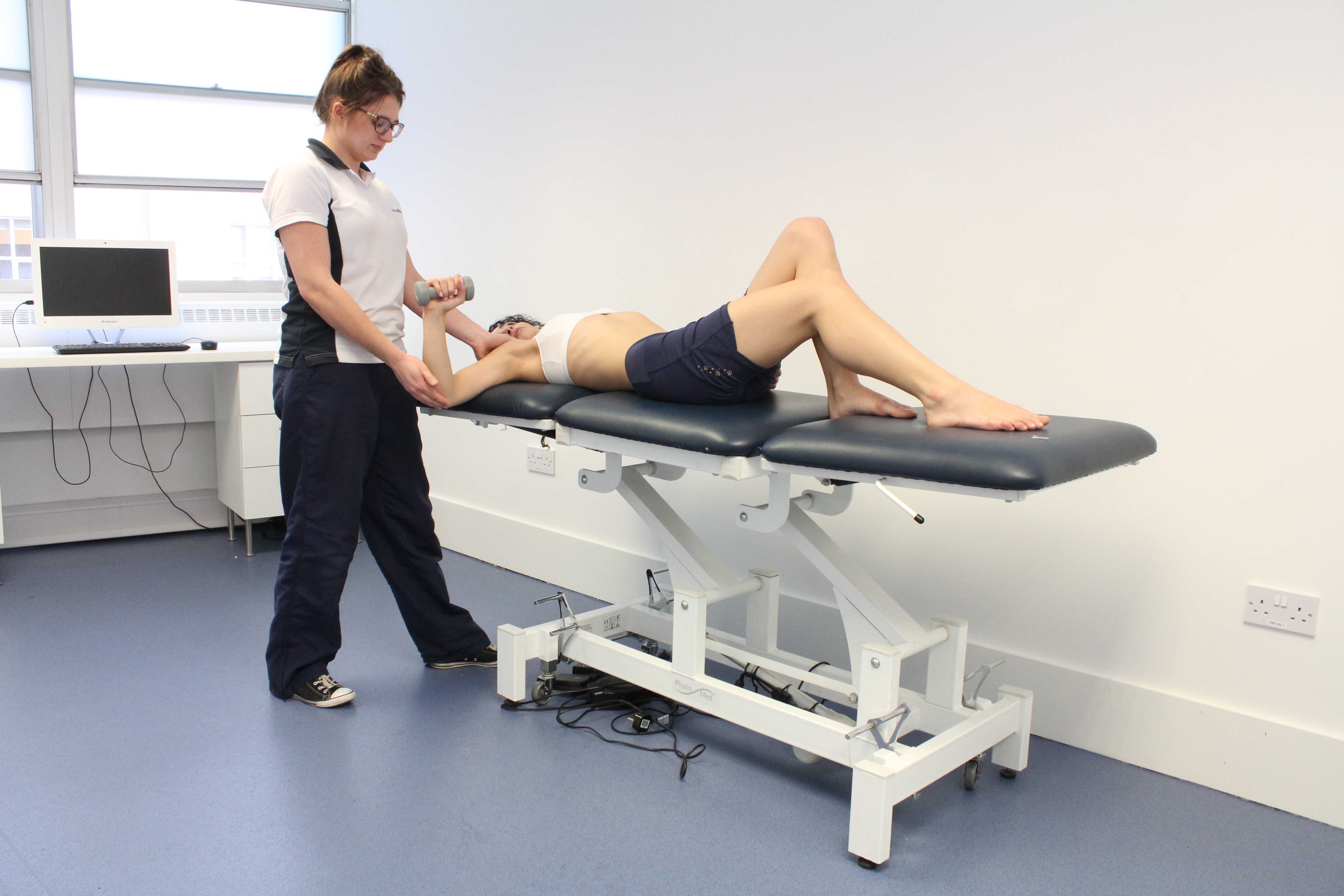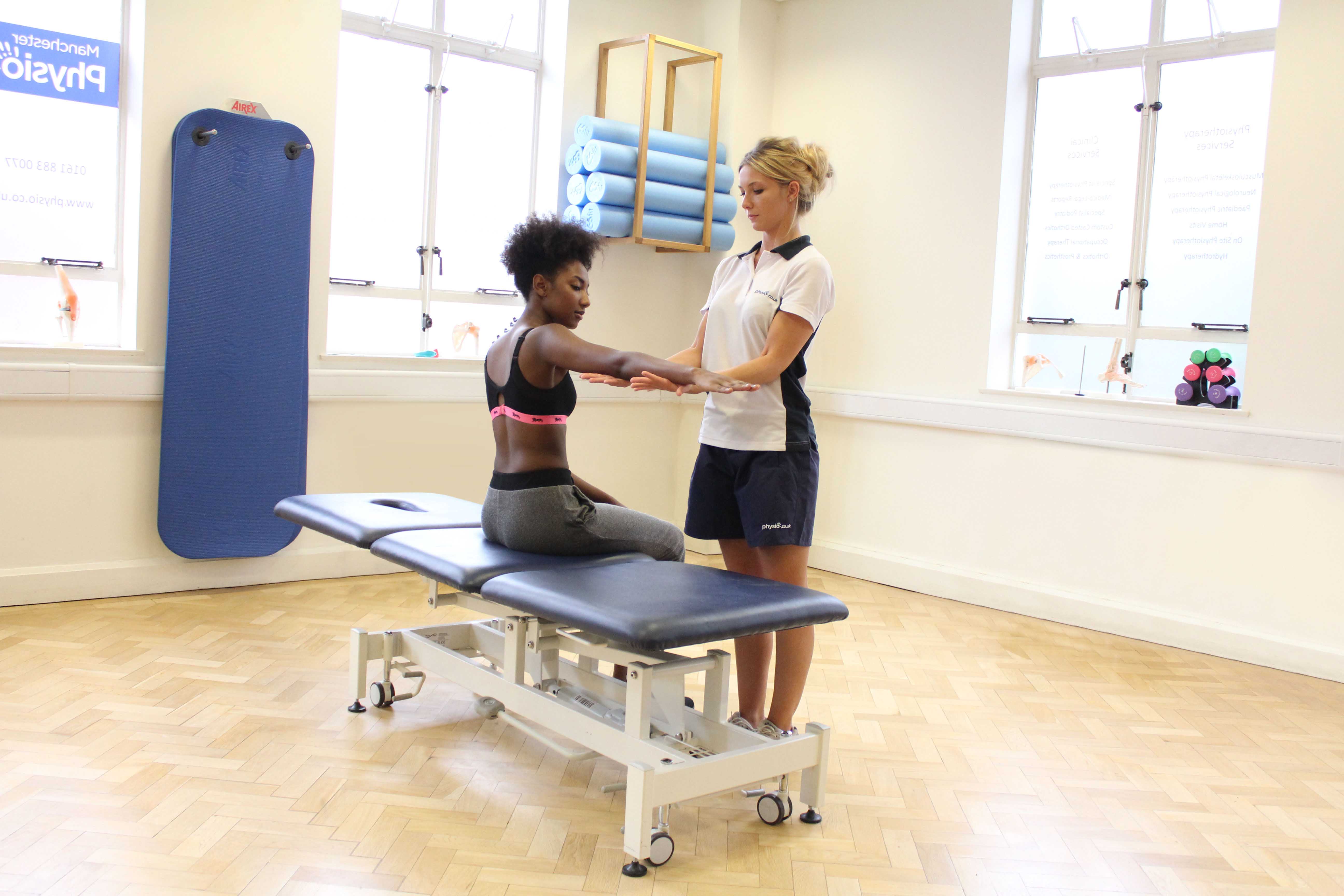Radial Head Excision
Radial head excision is a surgical procedure that involves the removal of the radial head (the smaller bone of the forearm that makes up the elbow joint) after severe damage following trauma or as a result of degenerative changes associated with arthritis. Physiotherapy after radial head excision is crucial to help achieve the return of full or near to full function in the affected elbow joint.
The radial head is shaped like a round disc and is important in motion of the elbow. The radial head moves both in flexion (bending) and extension (straightening) of the elbow joint, as well as pronation and supination (rotation) of the forearm. Therefore, injury or damage to the radial head can affect all movements of the elbow. Main indications for radial head excision are:
- Radial head fracture
- Arthritis
Radial head fracture
One of the indications for radial head excision is to treat a radial head fracture. This type of injury is most commonly caused by a fall onto an outstretched hand. Radial head fractures cause pain and swelling around the elbow as well as significantly limiting movement and function at the elbow joint.
Treatment of a fracture to the radial head depends on the severity of the damage. If the radial head is non displaced (remains in position) then a more conservative approach such as immobilisation followed by physiotherapy may be recommended. If the radial head fracture is displaced (out of position) following trauma then ORIF elbow may be required to reposition and stabilise the joints using screws or pins. In severe cases where the fracture is displaced (out of position) or comminuted (3 or more fragments of bone) and when the radial head has been irreversibly damaged, radial head excision surgery will be necessary. In some cases the radial head can be replaced with an artificial implant to further help regain elbow function and stability.
Arthritis
Another indication for radial head excision is arthritis that is causing irreversible damage to the radial head. The ends of the bones any joint are covered with articular cartilage which helps the bones of the joint glide over the each other smoothly and efficiently during movement. However arthritis in the elbow joint causes the cartilage of the radial head to can damaged causing the elbow joint to become very painful and stiff resulting in lack of mobility and reduced function within the elbow joint especially when rotating the forearm. When damage is severe, radial head excision is required to help return mobility and function in the elbow joint. In some cases the radial head can be replaced with an artificial implant to further help regain elbow function and stability.
 Above: Passive stretches and mobilisations of the elbow by MSK therapist
Above: Passive stretches and mobilisations of the elbow by MSK therapistSurgical procedure for radial head excision
During radial head excision surgery, the surgeon will make an incision on the outside of the arm avoiding any nerves and other structures within the elbow joint. The radial head is then located and excised / removed. The elbow is inspected and in cases with inflammatory arthritis the synovium (the membrane that lines the joints),is removed if necessary along with any damaged tissues and loose bodies that interfere with the motion of the joint (elbow debridement / synovectomy). If necessary, radial head excision is followed by radial head replace mentusing an artificial implant that provides stability and replicates the function of the radial head. This is only necessary if other damage to the joint. Otherwise, removal of an isolated radial head injury usually does not cause any impairment in function of the elbow joint. The wound is then closed using stitches or sutures.
Physiotherapy after radial head excision surgery is imperative to maximise the success of the surgery, prevent the likelihood of any problems occurring in the future and to help regain full or near to full strength, stability and function in the elbow joint.
 Above: Strengthening exercises for the muscles and connective tissue around the elbow
Above: Strengthening exercises for the muscles and connective tissue around the elbowSymptoms after radial head excision surgery
Immediately after you have undergone radial head excision surgery you will experience pain, swelling and stiffness in and around the elbow joint. You will feel significant instability in your elbow especially if you did not require the radial head to be replaced with an artificial implant. After the surgery you will also experience a short term decrease in function, mobility and range of movement in your elbow joint. After the surgery your elbow will be covered by a thick bandage. You will be given pain modalities to control the pain. You will be advised to keep your elbow elevated above chest level for several days to avoid excessive swelling and throbbing.A removable cast will be provided after you have undergone radial head excision and you will be given a sling to use for protection and support in the initial stages of your recovery. Physiotherapy should start as soon as possible after your radial head excision surgery. Furthermore, you will not be able to drive until you have full and painless range of motion in your affected upper limb.
 Above: Passive stretches and mobilisations of the elbow by MSK therapist
Above: Passive stretches and mobilisations of the elbow by MSK therapistPhysiotherapy after radial head excision surgery
Physiotherapy with Physio.co.uk will help restore stability, muscle strength and range of movement in your elbow once you have undergone radial head excision surgery. A comprehensive rehabilitation programme at Physio.co.uk will help you achieve the return of full or near to full function in your elbow joint whilst also protecting against further injuries or problems in the future. Recovery after radial head excision surgery can vary depending on several factors and commitment to a physiotherapy programme with Physio.co.uk will significantly improve your function and accelerate your recovery. Physio.co.uk will provide you with a comprehensive rehabilitation programme that focuses on treatment goals that are personal to you. Treatment goals will include the following:
- To restore a pain-free elbow joint
- To restore full range of motion (ROM)
- To restore full muscle strength and length
- To improve cardiovascular fitness and muscle endurance
- To re-establish independence with daily tasks
- To promote recovery and quality of life
1-4 weeks
During the early stages of your rehabilitation programme, Physio.co.uk will aim to control any pain and swelling you are experiencing in and around your elbow joint. At this stage, your physiotherapy programme will also focus on maintaining range of movement, flexibility and mobility as well as aiming to prevent deconditioning of your affected elbow and arm. Your physiotherapy will include:
- Cryotherapy (Ice)
- Elevation and compression
- Pain modalities
- Passive range of movement exercises
- Strengthening and stretching exercises for wrist, shoulder and unaffected arm for support.
- Gentle mobility and strengthening exercises for muscles around elbow joint (biceps, triceps etc)
5-8 weeks
After radial head excision your elbow will be considerably unstable and weak which will significantly affect function in your elbow and hand. After a month of rehabilitation, your physiotherapy programme will continue to focus on managing any pain and swelling you are still experiencing as well as progressing activities from the previous weeks. Physio.co.uk will progress exercises with the aim to increase range of movement, flexibility and mobility in the elbow joint. To help stabilise and strengthen your elbow, strengthening exercises will be included and progressed during the next period of your rehabilitation. Due to the absence of your radial head, emphasis will be on exercises that improve movements such as twisting of the forearm (i.e. pronation and supination). . Your physiotherapy at this stage will also include exercises that aim to improve function in your hand, wrist, shoulder and opposite arm as well as including some cardiovascular exercises to help improve your fitness. Your physiotherapy will include:
- Continuation of modalities to control pain and swelling (if applicable)
- Active range of movement exercises (bending, straightening and twisting elbow joint)
- Active strengthening exercises for muscles in and around elbow
- Strengthening, stretching and range of movement exercises for wrist and hand
- Strengthening, stretching and range of movement exercises for shoulder
- Activities for opposite arm
- Arm cycle
- Hydrotherapy
9-12 weeks
After three months of successful physiotherapy with Physio.co.uk, you will have seen marked improvements in the function of your elbow and arm. You will not be experiencing any pain or swelling in your elbow at this stage. The goals of your physiotherapy with Physio.co.uk will continue to focus on regaining the full function and strength in your elbow and arm. It is also necessary to continue exercises that aim to improve the strength and range of movement in your wrist, hand and shoulder of your affected arm for extra support and to maximise function. Emphasis will continue to be with activities that improve. Additionally, Physio.co.uk will now aim to increase your cardiovascular fitness and muscle endurance to further maximise the function in your elbow joint. Your physiotherapy will include:
- Continuation of range of movement and stretching exercises from previous weeks
- Continuation of strength training for muscles in wrist, shoulder and unaffected arm
- Emphasis on strength training and progressive resistance exercises for muscles around elbow
- Static arm cycle
- Hydrotherapy
- Function activities relative to job, hobby or sport
- Emphasis on independent home exercises
 Above: Passive stretch of muscles and connective tissue of the uppper arm
Above: Passive stretch of muscles and connective tissue of the uppper armSummary
Radial head excision is a surgical procedure that involves the removal of the radial head after severe damage following trauma such as radial head fracture or as a result of degenerative changes associated with arthritis. Radial excision surgery can provide significant relief from symptoms such as pain, stiffness and reduced function in the elbow joint. Physiotherapy after radial head excision is crucial to ensure the success of the surgery, prevent the likelihood of any future problems and to help you achieve the return of full or near to full function within the elbow joint. A physiotherapy programme with Physio.co.uk offers the return of symptom free, full or near to full function in the elbow joint. Commitment to a personal physiotherapy programme with Physio.co.uk will allow a more rapid return to everyday activities, work, hobbies, and sport. Call Physio.co.uk now on 0330 088 7800 for more information or to book an appointment please contact us.

 0330 088 7800
0330 088 7800


































